Rosenhöhe Park
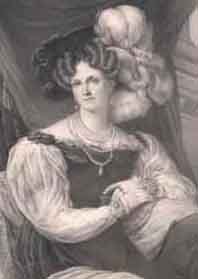
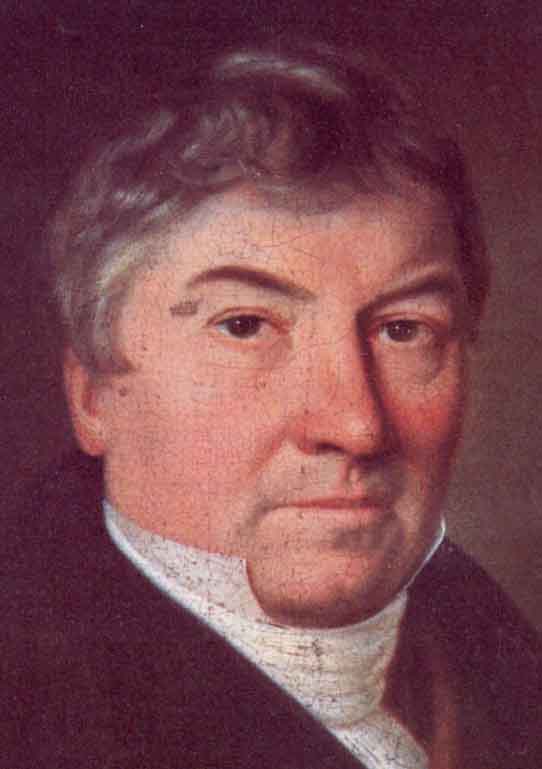
The Landscape Park
Darmstadt's Rose Heights (Rosenhöhe) is a unique combination of landscape park, rose garden, orchard meadows, historic buildings, sculptures, and burial grounds for Hesse's Grand Ducal family. The park‘s foundation was laid by Grand Duchess Wilhelmine at the beginning of the 19th century. She commissioned garden architect Johann Michael Zeyher, from Schwetzingen, to create a "garden in modern taste" in an eastern area of Darmstadt, hitherto known as the "Bosom hill". Zeyher created a landscape garden with numerous exotic trees, of which notably one, an Atlas cedar is still preserved today. Architectural focal points in the park were set by the Grand Duchess' country house, a tea house and garden pavillions. Wilhelmine named the area Rosenhöhe and used the garden as a private retreat. She herself enthused: "This small patch of Earth smiles on me like no other."
After her death in 1836, Wilhelmine left the park to her youngest son Carl. Together with his wife Elisabeth, a Prussian princess, he continued to use the Rosenhöhe as a summer residence. During this time, the house with wood-tiled façade, was built near the "Tea House" and also the "Spanish Tower", a folly at the north-east corner of the park.
Mausoleums & Tombs
As early as the 1820s, Grand Duchess Wilhelmine added a melancholic note of mortality to the heavenly ambience of the Rosenhöhe. After the death of her five-year-old daughter Elisabeth, she had a small temple built as a mausoleum, designed by architect Georg Moller. During the course of the 19th century, the original "Old Mausoleum" was extended by two wings.At the beginning of the 20th century, Grand Duke Ernst Ludwig had the so-called "New Mausoleum" built for his parents, Grand Duke Ludwig IV and Grand Duchess Alice, a daughter of Queen Victoria. The architect Karl Hofmann based his Romanesque-style building on the tomb of the Roman Empress Galla Placidia in Ravenna. Not far away, guarding another grave, is a figure of an angel created by the Art Nouveau artist Ludwig Habich: here lies Princess Elisabeth, who died in 1903 - the only daughter of Grand Duke Ernst Ludwig from his first marriage to Viktoria Melita. Grand Duke Ernst Ludwig, who died in October 1937, found his final resting place not far away in a simple grave "under the open sky" according to his own wishes. Only a month after his death, his wife Eleonore and the family of his eldest son Donatus were buried next to him. The family had perished in an air crash on the way to London for the wedding of Donatus' younger brother Ludwig, to Margaret Geddes.
Palais and Gatehouse
At the end of the 19th century, Grand Duke Ludwig IV and his brother Wilhelm were the park‘s custodians. In place of his grandmother Wilhelmine's country house, Prince Wilhelm built a palace in the Wilhelminian style instead, designed by the architect Gustav Jacobi. The building work also included the gatehouse on the Erbacher Strasse, opposite the present-day Ostbahnhof railway station.
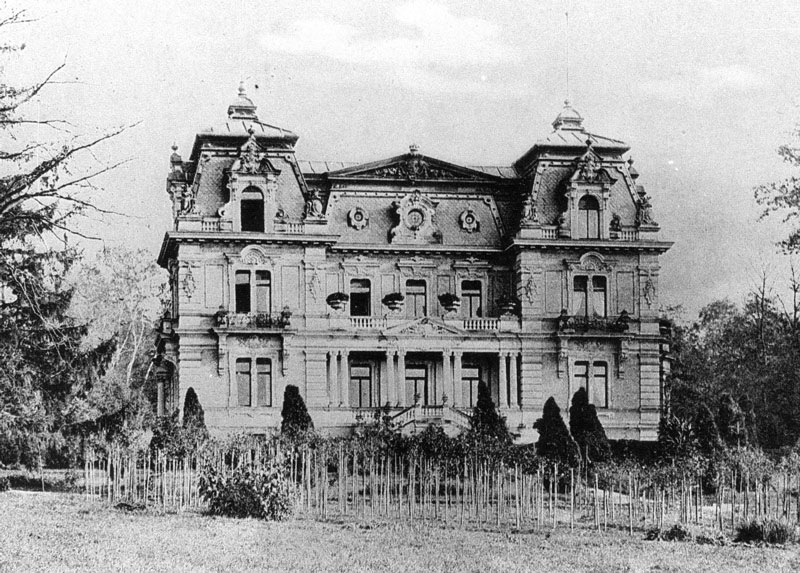 After the death of Prince Wilhelm, the palace was used by the Prussian diplomatic legation to the Grand Duchy of Hesse. Ultimately, in September 1944, when an Allied bombing raid devastated Darmstadt's city centre, the palace was destroyed with it. Today, the only physical remnants of the once stately building are the keystone above the former main entrance portal and a fountain. A beech hedge planted by the city of Darmstadt’s park and garden department marks the lines where the walls of the former palais once stood.
The gatehouse, meanwhile, stands as before at the south-west entrance to the park. It was completely renovated in 2004 by the city of Darmstadt with the support of the Förderverein Park Rosenhöhe.
After the death of Prince Wilhelm, the palace was used by the Prussian diplomatic legation to the Grand Duchy of Hesse. Ultimately, in September 1944, when an Allied bombing raid devastated Darmstadt's city centre, the palace was destroyed with it. Today, the only physical remnants of the once stately building are the keystone above the former main entrance portal and a fountain. A beech hedge planted by the city of Darmstadt’s park and garden department marks the lines where the walls of the former palais once stood.
The gatehouse, meanwhile, stands as before at the south-west entrance to the park. It was completely renovated in 2004 by the city of Darmstadt with the support of the Förderverein Park Rosenhöhe.
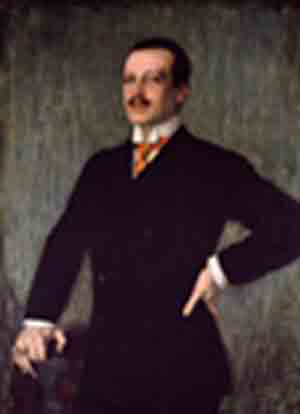
The Rosarium
Once Grand Duke Ernst Ludwig could call the entire Rosenhöhe his own, he made the plan "to create a rose garden, the likes of which were unknown in Germany." As a hybrid of Italian and English garden traditions, the terraced and geometric structured rosarium took form, where roses and perennials bloom almost the whole year round. In the east of the rosarium, the rose cupola rises up, the garden's blooming heart; rich veins of climbing roses are entwined on the steel-and-wood construction and on the pergolas leading to it.After the death of Grand Duke Ernst Ludwig, and especially after the Second World War, the rosarium increasingly fell into disrepair. Rose cupola, pergolas, and retaining walls collapsed; bramble bushes spread over the roses and shrub beds. After the ownership of the Rosenhöhe passed to the city of Darmstadt in 1980, little by little the Rosarium has been reconstructed. Today the western part of the Rosarium is graced, – right next to the water lilies pond with the bronze Auffliegender Taubenschwarm ("Soaring flock of Doves") by the Darmstadt sculptor Gotthelf Schlotter. The observation deck the sculpture Das Blätterdach ("The leaf canopy") by Cornelia Müller is located.
Just opposite to the Rosarium‘s entrance and in front the gardener's cottage a herb garden has been laid out.
Art & Artists
Since 1926 the Löwentor ("Lions' gate") has formed the striking main entrance to the Rosenhöhe park. It was originally built for the Artist colony's last exhibition on the Mathildenhöhe, in 1914. The lions and bronze reliefs are by the sculptor Bernhard Hoetger. The pillars were designed by architect Albin Müller, who when rebuilding the gate at this spot used clinker brick as building material.Right behind the Löwentor, artist houses and studios were constructed in the early 1960s. Along with the two artist houses built inside the park ten years earlier, Prince Ludwig, son of Grand Duke Ernst Ludwig, wanted to make a contribution to promoting the arts. The foundation established for this purpose later passed into city ownership, which continues to manage the houses to this day. Past and current residents include the poet and winner of Germany's most prestigious literary honour, the Büchner Prize, Karl Krolow, the writers Gabriele Wohmann and Heinrich Schirmbeck, the founder of the Bauhaus Archive, Hans Maria Wingler, the conductor Hans Drewanz and the sculptors Wilhelm Loth and Thomas Duttenhöfer.
The latter created the sculpture in remembrance of Karl Krolow near the tea house. The "Soaring flock of Doves" in the Rosarium as well as "The Geese" next to the gatehouse, were created by the sculptor Gotthelf Schlotter.
Precious green
The Rosenhöhe park is not only a cultural monument, but also a precious local recreational area. Around 1,500 trees distinguish the park: as well as the fruit trees in the orchard meadows in the east. There are the tall deciduous and coniferous trees, some 200 years old, that give the scenic portion of the Rosenhöhe a special flair. Sycamore, oak, hornbeam, yew trees and cherries, together with numerous exotic tree species, such as Californian sequoia, Weymouth pine, tulip tree or gingko can be found here.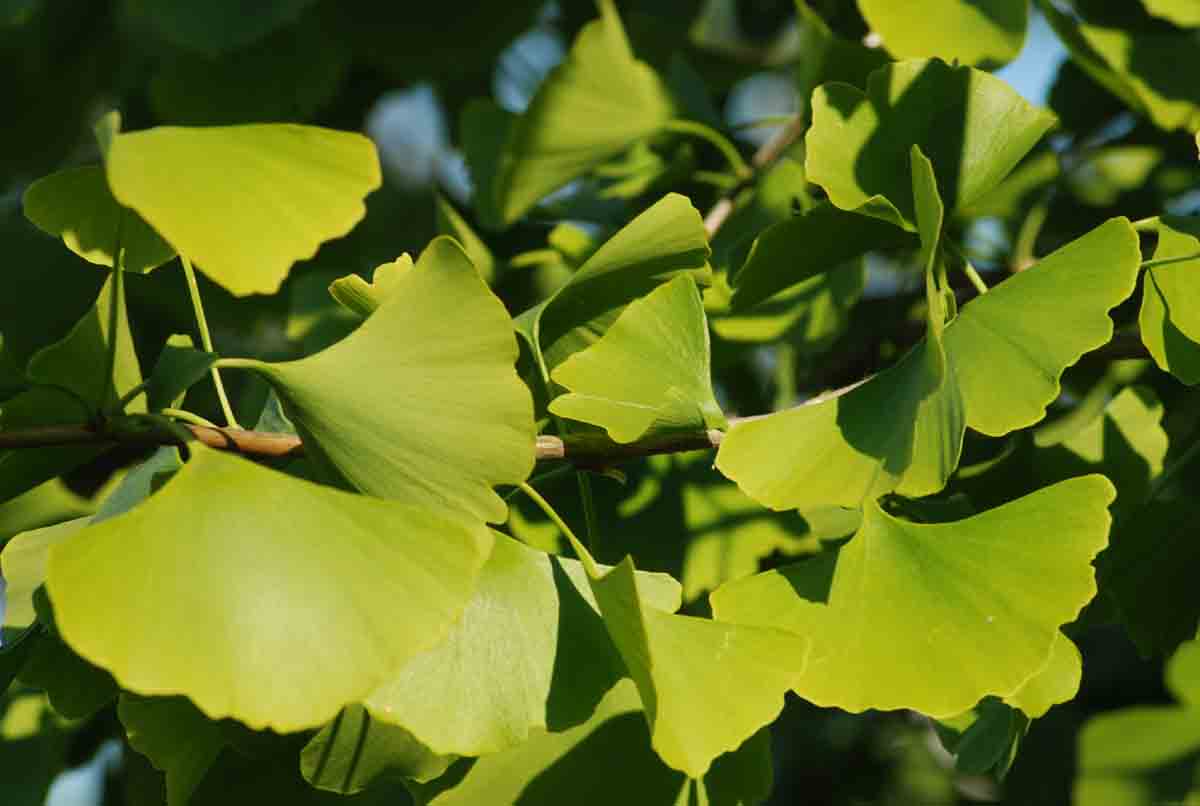 The hollows in the old trees are used by woodpeckers, starlings, jackdaws, owls, bats, and squirrels as nesting places. In smaller hollows common redstart, coal and blue tits, and pied flycatchers nest. The tree population also provides an ideal habitat for numerous species of beetles.
Since most of the meadow areas in the Rosenhöhe park are extensively cultivated, i.e are only mowed once a year, a rich meadow flora has evolved. In addition to yarrow, burnet saxifrage, lamb's tongue, spreading bellflower and meadow saffron all thrive here. This diverse flora also serves as the food source for many insects, including butterflies and dragonflies.
Together with the Oberfeld, a cold air source area adjacent to the east, the Rosenhöhe park also forms an important fresh air corridor for Darmstadt's city centre.
The hollows in the old trees are used by woodpeckers, starlings, jackdaws, owls, bats, and squirrels as nesting places. In smaller hollows common redstart, coal and blue tits, and pied flycatchers nest. The tree population also provides an ideal habitat for numerous species of beetles.
Since most of the meadow areas in the Rosenhöhe park are extensively cultivated, i.e are only mowed once a year, a rich meadow flora has evolved. In addition to yarrow, burnet saxifrage, lamb's tongue, spreading bellflower and meadow saffron all thrive here. This diverse flora also serves as the food source for many insects, including butterflies and dragonflies.
Together with the Oberfeld, a cold air source area adjacent to the east, the Rosenhöhe park also forms an important fresh air corridor for Darmstadt's city centre.
